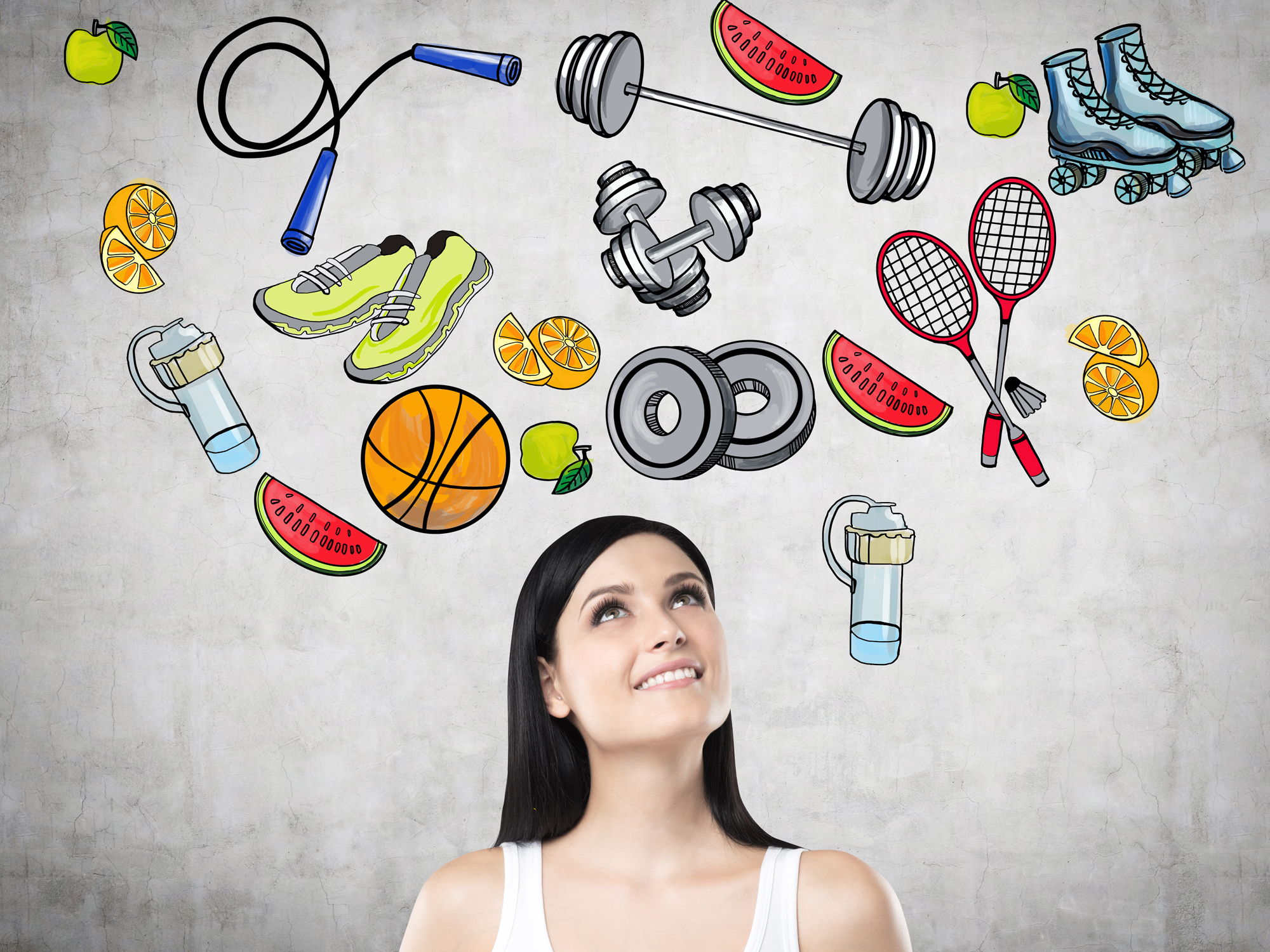Get Easy Health Digest™ in your inbox and don’t miss a thing when you subscribe today. Plus, get the free bonus report, Mother Nature’s Tips, Tricks and Remedies for Cholesterol, Blood Pressure & Blood Sugar as my way of saying welcome to the community!
‘Thinking’ yourself fit exercise works

You may have a lot of sitting time during your day and the message you’ve been given is that sitting is the new smoking.
But there’s research that counters that…
If you sit all day and you’re already fairly fit, and exercise regularly, you’re NOT at higher risk for weight gain, or disease than someone who has a more active job.
Though it might seem reasonable to think that someone who styles hair all day or teaches kindergarten would naturally be more fit than someone who sits at a desk eight hours a day, it’s not the case…
Unless, of course, you tell yourself that your job is killing you and you sit too much.
So stop. Look at the ways you are busy and engaged… already standing… moving… fidgeting… wiggling… and walking throughout your day.
I have a great example of what I mean…
A study done by Alia Crum at Columbia University proved that thinking the activity you’re already getting is beneficial to your health — without any other changes — improved physical status like weight, body composition and blood pressure.
One group of hotel maids was told just that about their job — that cleaning 15 rooms a day was exercise and that it counted as beneficial activity.
A group of identical maids was not told what they were doing was beneficial, though were given the message that exercise is necessary for good health.
There was no change in activity for either group pre and post study. That only thing that changed during the four weeks was the maids’ perception of what they were doing. The 44 told what they were doing provided the physical benefits of exercise experienced weight loss and other health improvements.
What does that mean? Your thoughts can change the physical response in your body.
Ellen Langer, Harvard researcher, calls this a psychological prime, a trigger that causes the body to take curative measures all by itself.
Of course, what you’re doing does have to be good for you. Believing that smoking is good for you would not override the physical damage science has proven smoking does to the body.
But your mindset about your lifestyle can have a major impact on your health.
How do you overcome your own negative thoughts and patterns? Surround yourself with a community or friends that are doing what you’re doing — or what you want to be doing — is key to changing your habits with less resistance and more support.
Your own internal resistance to change, whether it be adding a positive habit or stopping a negative habit, is natural. It applies to both your thoughts and to actions. Overcoming additional external resistance from others can make your need for willpower just too much. All of that creates too much swimming upstream.
You’ve got to counter that. And these four steps will support your positive mindset:
- Identify negative self-talk and negative comments from others.
- Shift your own words and recognize that you can’t change anyone else.
- Acknowledge that you need positive, not negative, and also not neutral, support.
- Ask for support you want and need in order to shift your exercise thoughts, and therefore your actions.
Making the change for more physical activity
Say you want to add some additional activity to your day in addition to positively thinking about your health. Imagine you’re starting a new exercise routine and you’re uncomfortable in a new environment. You may feel uncoordinated, like a fish out of water.
In addition to a supportive environment, use cues, triggers and rewards. One cue might be that you place your shoes by the bed in the morning. Pack your gym bag so it’s ready in the car after work.
Beware of triggers that either prevent you from making a positive change, or encourage a habit you’re trying to give up. If you’re hungry before starting exercise… if you can see laundry or piles of mail… or someone calls and invites you out for cocktails — these are triggers.
If you have a dish of candy on your desk or there’s pizza in the break room while trying to give up sugar or eat more healthfully, these are triggers. Try to increase your cues and decrease your triggers.
Incentivize yourself or make yourself pay if you miss. These tricks don’t actually change the way you think. However, they may temporarily help you set a new habit in place long enough for intrinsic motivation to take over.
When people tie their big life values to changes that they want to make, they end up feeling better about themselves and also less stressed about making changes. Change is stressful even if it’s a change you’re choosing for yourself.
When you catch yourself saying, “I wanted to do ________, but life got in the way,” or you hear someone else saying, “ I can’t, I have too much to do,” what’s being said is, this is the tipping point, it’s too much and I can’t handle this right now.
You may not be able to do it all right now. You only have so much bandwidth. What can you do?
If you have an ideal, what I call a plan A, and you hold yourself to that being the only option, then you leave yourself few choices. You either win or lose. Success, though, is usually a continuum.
If you add a plan B, a second best, you give yourself room to still be successfully on the path.
Adding one more option, a plan C, means you can do what is most important to success in any area of life. You are consistent.
Maybe your ideal is a plan that involves morning interval training twice a week, weight training twice a week, two longer activities on weekends and a yoga class two evenings a week. Your morning exercise is typically about 30 minutes long. That’s your plan A.
Your second best, plan B, might be the morning exercise plus yoga at home with a dvd or a ten minute practice on your own when you don’t make it to class.
Your plan C, if-all-else-fails, option may be 10 minutes of something in the mornings during those crazy weeks.
Sources:
-
https://academic.oup.com/ije/article/44/6/1909/2572591/Associations-of-sitting-behaviours-with-all-cause
-
https://www.ncbi.nlm.nih.gov/pubmed/17425538
-
https://www.ncbi.nlm.nih.gov/pubmed/17425538
-
https://dash.harvard.edu/bitstream/handle/1/3196089/Langer_ReducingStereotyping.pdf?sequence=1












